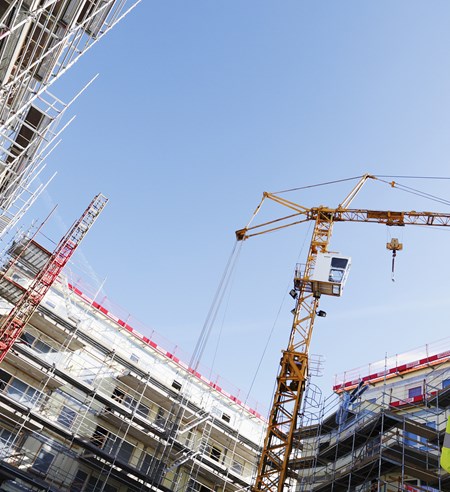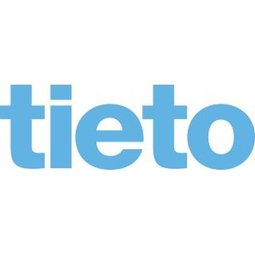下载PDF
Wienerberger/Pipelife's Digital Transformation: Enhancing Performance through Modern Data Management

技术
- 分析与建模 - 计算机视觉软件
- 应用基础设施与中间件 - 数据可视化
适用行业
- 水泥
- 建筑与基础设施
适用功能
- 维护
用例
- 施工管理
- 时间敏感网络
服务
- 云规划/设计/实施服务
挑战
Wienerberger 和 Pipelife 拥有 200 多个生产基地和 1000 多种不同的产品线和机器,为建筑材料和建筑行业提供广泛的产品。
这些众多的生产线导致了许多不同的机器和过程控制系统,这些机器和过程控制系统包含有价值的生产数据。为了集中收集和提供这些本地数据并确保优化生产过程,需要一种经济、符合行业标准且可扩展的解决方案。
客户
维纳伯格公司
关于客户
Wienerberger AG是奥地利最大的砖砌体和陶瓷屋面系统解决方案生产商。该公司在奥地利经营着六个空心砖生产基地和三个屋顶瓦片生产基地。 Pipelife Austria 是奥地利领先的塑料管道制造商,为基础设施、建筑服务和灌溉生产可持续、高质量和创新的产品和解决方案。
解决方案
通过转移公司“所有相关数据始终在线可用”的愿景并创建“数字双胞胎”,TietoEVRY 为 Wienerberger & Pipelife 提供全面的数字化能力。
这允许建立与数百个数据点的连接,并且每秒可以将数千个信号传输到基于 Azure 的云环境中的中央数据中心。 Azure 功能用于摄取、存储、分析和可视化数据流。特定于用户组的访问可启用自定义视图。优点:不同的角色可以处理与其相关的不同但具体的信息。
运营影响
数量效益
相关案例.

Case Study
System 800xA at Indian Cement Plants
Chettinad Cement recognized that further efficiencies could be achieved in its cement manufacturing process. It looked to investing in comprehensive operational and control technologies to manage and derive productivity and energy efficiency gains from the assets on Line 2, their second plant in India.

Case Study
IoT System for Tunnel Construction
The Zenitaka Corporation ('Zenitaka') has two major business areas: its architectural business focuses on structures such as government buildings, office buildings, and commercial facilities, while its civil engineering business is targeted at structures such as tunnels, bridges and dams. Within these areas, there presented two issues that have always persisted in regard to the construction of mountain tunnels. These issues are 'improving safety" and "reducing energy consumption". Mountain tunnels construction requires a massive amount of electricity. This is because there are many kinds of electrical equipment being used day and night, including construction machinery, construction lighting, and ventilating fan. Despite this, the amount of power consumption is generally not tightly managed. In many cases, the exact amount of power consumption is only ascertained when the bill from the power company becomes available. Sometimes, corporations install demand-monitoring equipment to help curb the maximum power demanded. However, even in these cases, the devices only allow the total volume of power consumption to be ascertained, or they may issue warnings to prevent the contracted volume of power from being exceeded. In order to tackle the issue of reducing power consumption, it was first necessary to obtain an accurate breakdown of how much power was being used in each particular area. In other words, we needed to be able to visualize the amount of power being consumed. Safety, was also not being managed very rigorously. Even now, tunnel construction sites often use a 'name label' system for managing entry into the work site. Specifically, red labels with white reverse sides that bear the workers' names on both sides are displayed at the tunnel work site entrance. The workers themselves then flip the name label to the appropriate side when entering or exiting from the work site to indicate whether or not they are working inside the tunnel at any given time. If a worker forgets to flip his or her name label when entering or exiting from the tunnel, management cannot be performed effectively. In order to tackle the challenges mentioned above, Zenitaka decided to build a system that could improve the safety of tunnel construction as well as reduce the amount of power consumed. In other words, this new system would facilitate a clear picture of which workers were working in each location at the mountain tunnel construction site, as well as which processes were being carried out at those respective locations at any given time. The system would maintain the safety of all workers while also carefully controlling the electrical equipment to reduce unnecessary power consumption. Having decided on the concept, our next concern was whether there existed any kind of robust hardware that would not break down at the construction work site, that could move freely in response to changes in the working environment, and that could accurately detect workers and vehicles using radio frequency identification (RFID). Given that this system would involve many components that were new to Zenitaka, we decided to enlist the cooperation of E.I.Sol Co., Ltd. ('E.I.Sol') as our joint development partner, as they had provided us with a highly practical proposal.

Case Study
Splunk Partnership Ties Together Big Data & IoT Services
Splunk was faced with the need to meet emerging customer demands for interfacing IoT projects to its suite of services. The company required an IoT partner that would be able to easily and quickly integrate with its Splunk Enterprise platform, rather than allocating development resources and time to building out an IoT interface and application platform.

Case Study
Bridge monitoring in Hamburg Port
Kattwyk Bridge is used for both rail and road transport, and it has played an important role in the Port of Hamburg since 1973. However, the increasing pressure from traffic requires a monitoring solution. The goal of the project is to assess in real-time the bridge's status and dynamic responses to traffic and lift processes.

Case Study
Bellas Landscaping
Leading landscaping firm serving central Illinois streamlines operations with Samsara’s real-time fleet tracking solution: • 30+ vehicle fleet includes International Terrastar dump trucks and flatbeds, medium- and light-duty pickups from Ford and Chevrolet. Winter fleet includes of snow plows and salters.






